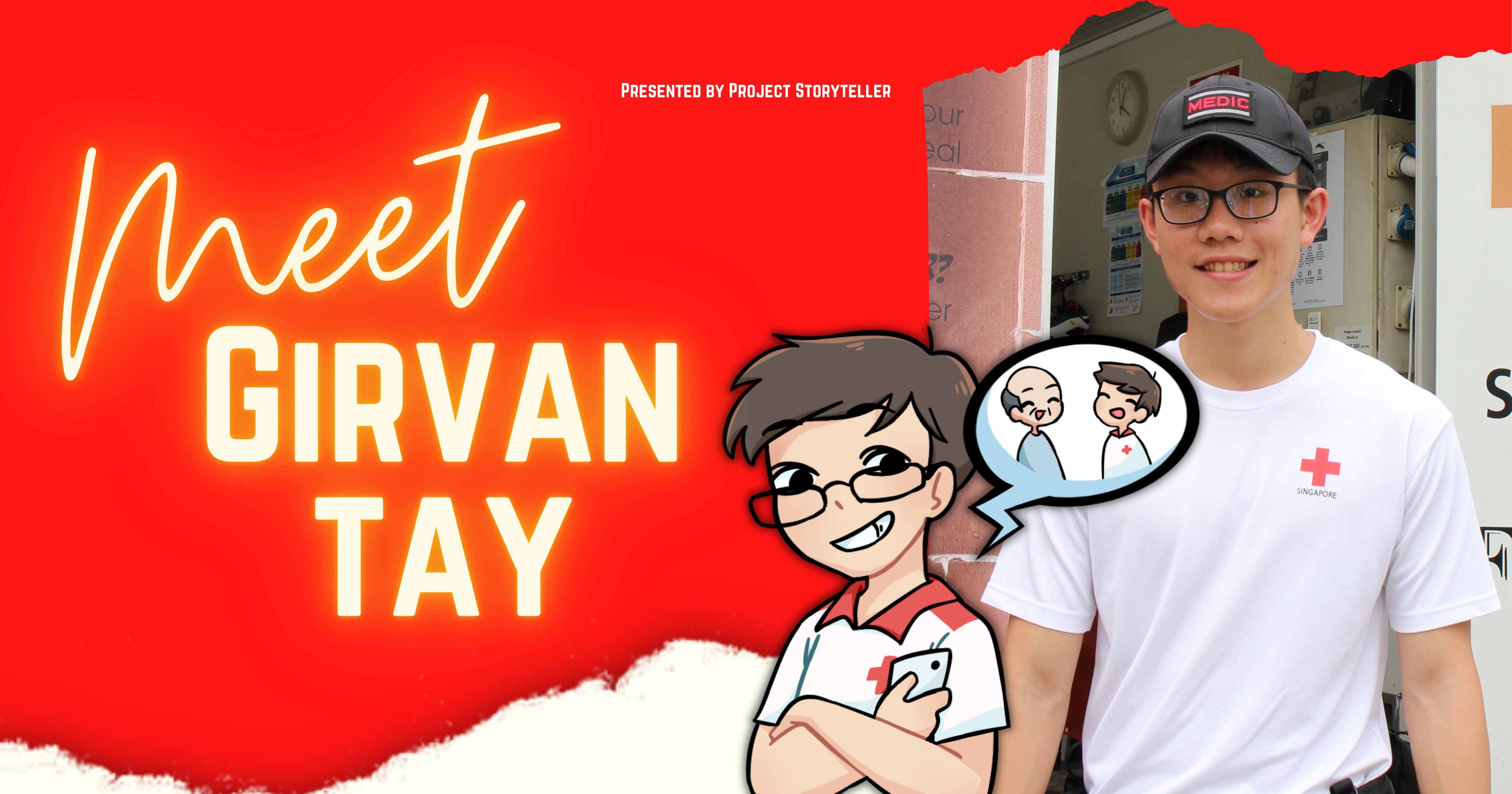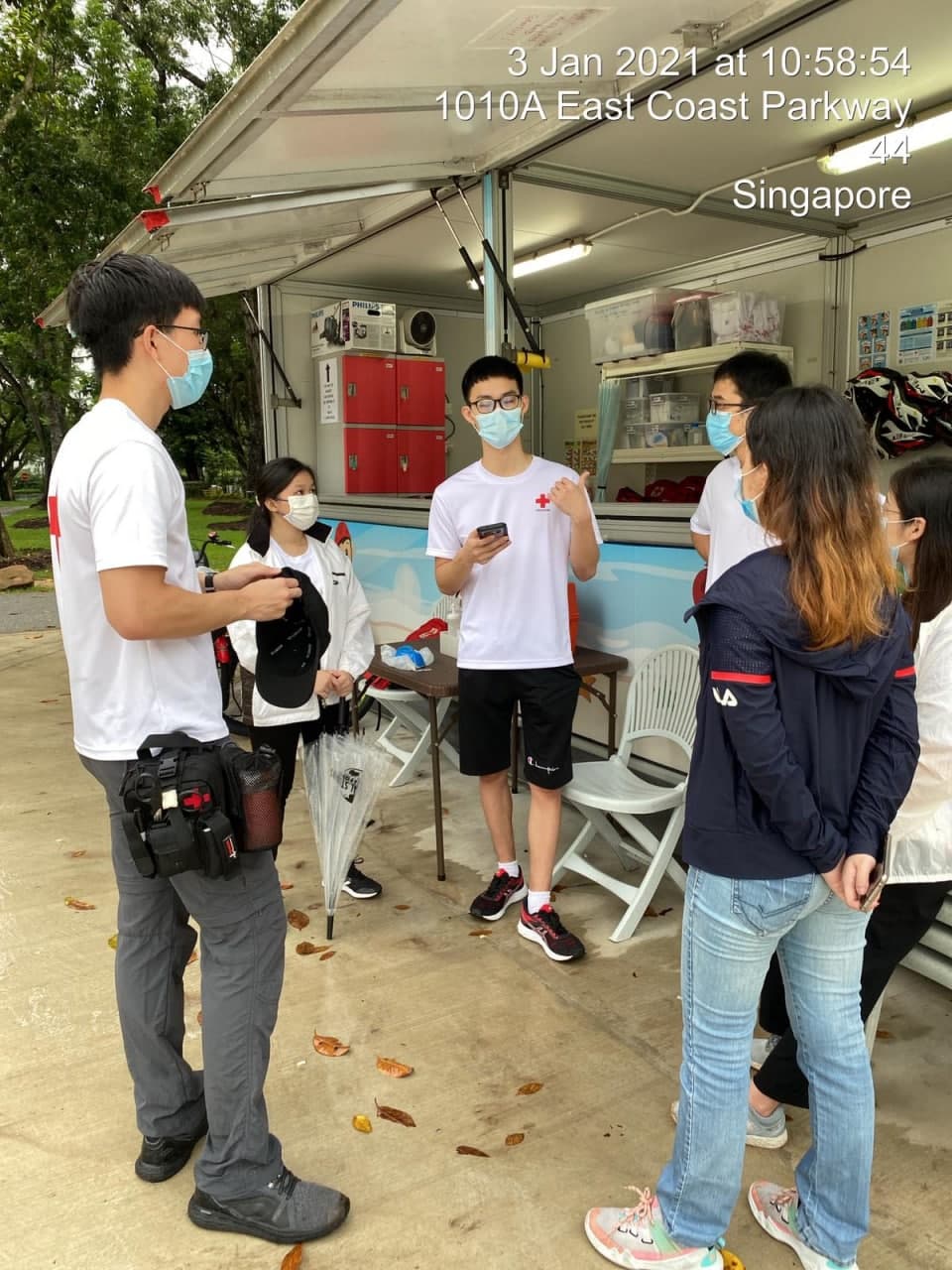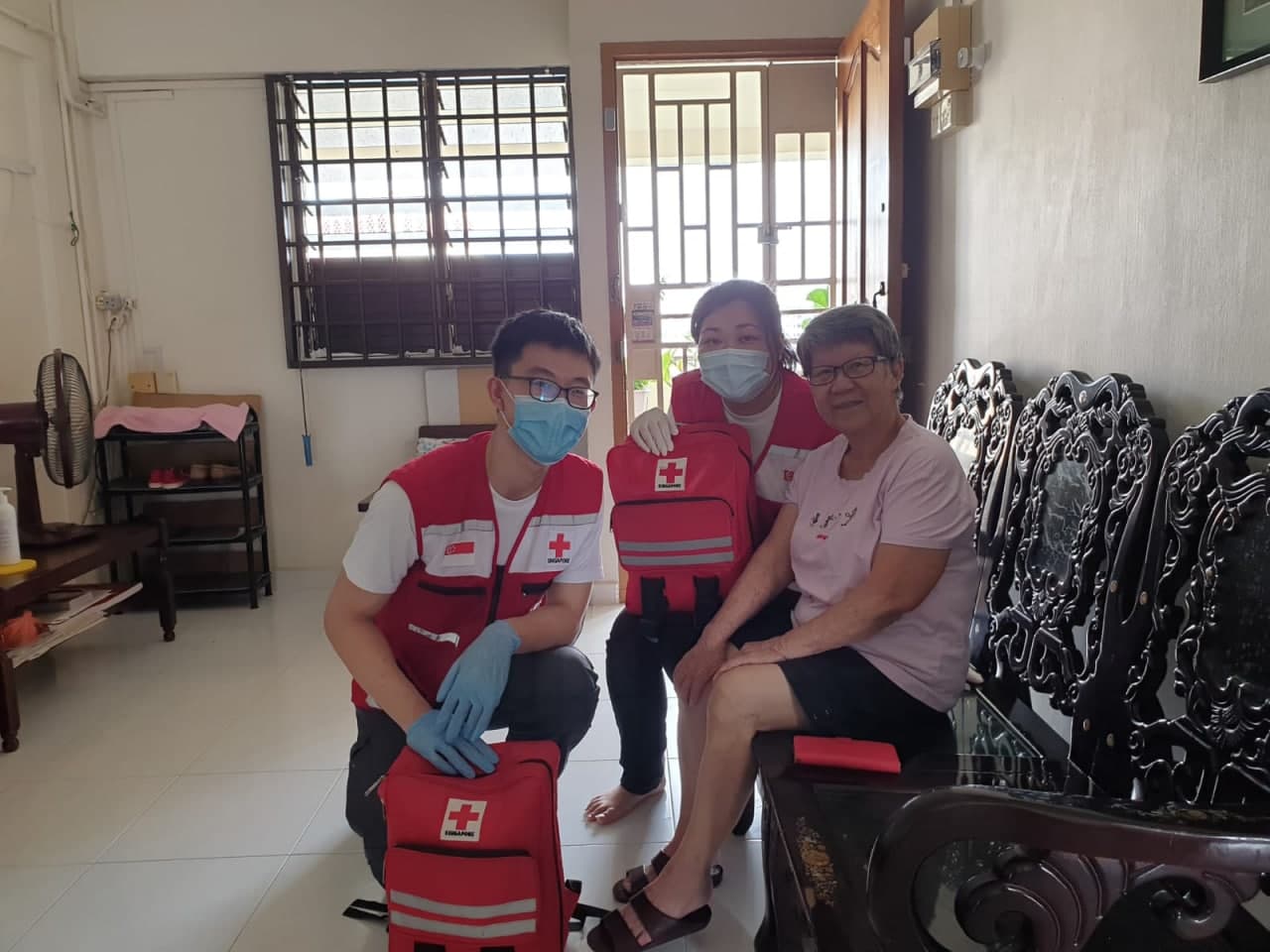
With the hectic schedules many young people struggle to juggle, we take a look into how a university undergraduate manages his commitments while being on standby to volunteer 24/7.
What would you do if you had six months of free time for yourself?
For many, the answer is simple - to find a job and earn money.
For others, volunteering is the obvious solution. With seemingly more time and energy than the working population, youth are the ideal volunteers, though some are hesitant to get started.
We take a look into the journey of one such volunteer, Girvan Tay Yang Hong, who was fresh out of National Service (NS). Girvan shares with us the lesser-known side of volunteering; its challenges and motivations.
Finding his footing
Following a bad biking accident at East Coast Park which resulted in a ligament tear in his leg, Girvan consulted a doctor. The doctor informed him that he could have sought help from Singapore Red Cross’ (SRC) First Aider on Wheels (FAOW) as the volunteers cycle along East Coast Park providing first aid treatments to those in need during weekends and public holidays.
Inspired, Girvan then embarked on his volunteering journey by registering as a volunteer with SRC to serve those in need. His commitment to volunteering shone through “the time when he was volunteering every day”, brushing aside detractors who suggested he earned his keep.

ADAPTING TO THE PANDEMIC: Girvan (extreme left) at East Coast Park on 3 Jan 2021 while volunteering for First Aid on Wheels. The number of volunteers allowed had been reduced to six instead of the usual 12, following the Covid-19 restrictions. (PHOTO: Girvan Tay Yang Hong)
After volunteering in different capacities across SRC’s diverse services, he realised that he was not interested in or passionate about them. Fortunately, Girvan later found his calling and passion for first aid. Indeed, his passion for first aid was evident as he became more animated discussing it. He cited that the tangibility of its impact appealed to him. It comes as no surprise as he is pursuing his undergraduate studies in Nanyang Technological University’s (NTU) Lee Kong Chian School of Medicine, which aligns closely with this cause.
When he was in his first year of medical school, Girvan kickstarted an initiative with his NTU friends. In the initiative, SRC provided free first aid training to medical students. In return, the medical students volunteered in SRC’s first aid related activities such as TransportAid and HoME+.
Do the pros outweigh the cons?
Volunteering entails much dedication and sacrifice of one’s personal time and energy. Girvan had visited beneficiaries more than 10 times in the middle of the night over the past year. Yet, he felt humbled by the experiences.
In spite of the time, energy and money spent, his “key retaining factor” was the friendships forged with volunteers and beneficiaries through volunteering.

A WELL-INTENDED GOODBYE: Girvan (extreme left) in the earlier part of 2021, during one of his HoME+ visits. One of his more fondly remembered valedictions from beneficiaries is “hope to never see you again”, which he joked was “a good thing for volunteers, because the volunteers don’t want beneficiaries to get injured.” (PHOTO: Girvan Tay Yang Hong)
“No matter how much you think it’s for the other person, volunteering itself is not innately a selfless act. It can be perceived as selfish because there’s an element of personal desire involved,” said Girvan.
He recalled being disillusioned at the onset. But he has since come round to looking at it positively, as “ultimately, everyone volunteers because they want to.”
His most memorable experience was receiving a phone call from a beneficiary he had helped, thanking him and the team. The phone call made him feel that his efforts were worthwhile.
“Knowing that the casualty is doing fine, is in itself the best reward,” he said.
Keeping the flame alive
In 2018, the National Youth Council (NYC) Compilation Report disclosed that, among youth who had not taken up volunteering, the key hindering factors were:
- Lack of time (78 percent)
- Had not been approached (24 percent)
- Had not considered volunteering (22 percent)
- Deemed it to be boring (17 percent)
- Unsure where to get started (16 percent)
Girvan summed up his approach to overcoming hurdles to volunteer as, “if you have the “why”, the “how” will naturally solve itself.”
His time as a medical undergraduate has offered many opportunities for him to learn about “the fragility of life”. It spurred him on to “treasure every minute and spend time doing something that matters.”
His passion for volunteering came through loud and clear, as he recalled the stark difference between the two groups of volunteers he volunteered with.
“Those with passion will unconsciously stoop down to match the beneficiaries’ eye level. They will talk, engage, understand how the beneficiaries are feeling, alleviate their concerns and comfort them,” he explains.
Girvan’s pet peeve was “volunteers who quickly dismissed the beneficiaries once they had been attended to.”
His firm belief and resolution to put his skills to good use shine through in his intention to “open a free clinic” and “join Doctors Without Borders, as that’s where help is needed the most.”
It is evident that Girvan practices what he preaches. He is a sterling example to other youth that it is possible to find time to give back.
He aptly highlighted, “Along with the passion to serve, what matters is that you start doing it first.”
By Jean Margaret Suzette Bailey, Republic Polytechnic’s School of Mass Communications
|
Inspired to join our humanitarian movement? Join the Singapore Red Cross as a volunteer. |

